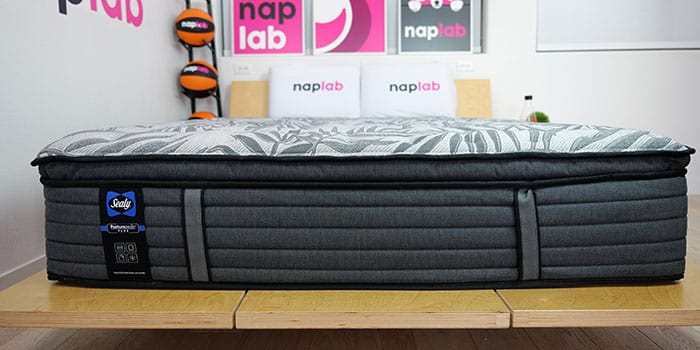
Best For
- High-profile 14″ thickness
- Fast material response time
- Great for sex with moderate bounce and fantastic edges
Considerations
- Higher levels of motion transfer
- Likely not enough pressure relief for most side sleepers
- Good, but not great cooling
Our Verdict
The Sealy Posturepedic Plus is a 14″ innerspring mattress with a poly foam comfort layer atop a classic innerspring unit.
It has moderate levels of sinkage and bounce, giving the mattress a balanced feel.
The Posturepedic Plus mattress is available in Plush or Firm. The Plus mattress has a medium feel (5 out of 10 firmness) and the Firm has a slightly firm feel (7 out of 10). These assessments are based on a firmness scale where 10 is the most firm.
This mattress has a performance score of 7.88, which ranks it in the bottom 15% of all mattresses tested to date. The quality of materials really hurts the score and ultimately creates a mattress that struggles to compete with other mattresses on the market.
The Posturepedic Plus RidgeCrest is priced at $849 for a queen mattress, 40% less than the average mattress cost of $1,429 (considering all mattresses and all types tested to date).
Overall, this is an inexpensive mattress, but the performance is also lacking, so in a way, you’re getting what you pay for. If you’re open to other mattress types besides innerspring, many other options have higher performance at a similar price point.
Type: Innerspring
Firmness: Medium (5) or Slightly Firm (7)
Best For: Back or Stomach Sleepers, Moderate Body Weights
In This Review
Performance Tests | Firmness | Support & Sleeping Positions | Design | Materials | Comparisons | FAQs
Performance Tests
At NapLab, we put each mattress to the test.
We test 10 different factors that impact the performance, comfort, and value of the mattress. We then take the results of that test and compare to every mattress we’ve tested to date.
Check out the full performance table below to see how this mattress ranks:
| Factor | Sealy Posturepedic Plus RidgeCrest II | Average |
|---|---|---|
| Overall Score | 7.88 | 8.55 |
| Price (Queen) | $850 | $1,326 (Coil only) |
| Cooling – Score | 8.0 | 8.8 |
| Sinkage – Depth | 2.17″ | 2.16″ |
| Sinkage – Feel | Moderate | Moderate |
| Motion Transfer – Score | 8.0 | 8.2 |
| Motion Transfer – Acceleration | 9.53 m/s² | 8.64 m/s² |
| Response Time – Score | 7.2 | 8.9 |
| Response Time – Mostly Recovered | 0.5 sec. | 0.4 sec. |
| Response Time – Fully Recovered | 2.8 sec. | 0.9 sec. |
| Bounce – Height | 10.00″ | 9.69″ |
| Bounce – Feel | Moderate | Moderate |
| Edge Support – Score | 9.5 | 8.6 |
| Edge Support – Sitting | 3.00″ | 4.07″ |
| Edge Support – Lying | Excellent | Good |
| Sex – Score | 8.9 | 8.5 |
| Pressure Relief – Score | 6.0 | 8.8 |
| Comfort Layer Thickness | 5.0″ | 4.2″ |
| Mattress Thickness | 14″ | 12.0″ |
| Off-Gassing – Score | 7.2 | 8.4 |
| Off-Gassing – Smell | Strong | Strong |
| Off-Gassing – Days | 10 days | 7 days |
| Company – Score | 9.6 | 8.8 |
| Trial | 365 nights | 165 nights |
| Warranty | 10 years | 25% have lifetime warranties, average of other 75% of mattresses is 14 years |
How is Sealy Posturepedic Plus Different?
The Sealy Posturepedic Plus RidgeCrest II mattress has below-average overall performance and a price that is also below the average—a savings of 43% (or $832) compared to the average coil mattress.
Advantages
Besides cost savings, other advantages to the Sealy Posturepedic include better-than-average edge support, a thicker profile (2″ thicker than average), and better sex performance.
Neutral Factors
The sinkage level is right at the average and the bounce levels are slightly more than the average. Both of these factors are generally more dependent on a sleeper’s personal preference.
Disadvantages
Cooling performance is less than average, along with higher levels of motion transfer, slightly slower material response time, and a longer off-gassing period. However, the biggest weakness is simply the pressure relief, which is severely lacking.
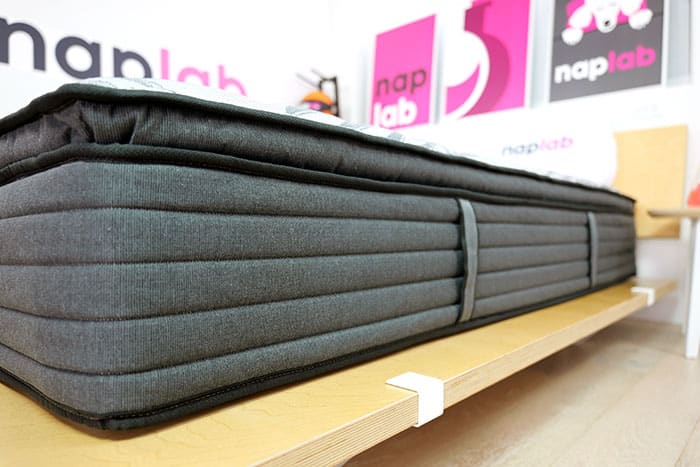
Cooling Test
The Sealy Posturepedic Plus has good, but not amazing cooling performance. During our tests, I felt a slight to moderate level of heat retention around my body.
Baseline Temp.
73.7° F
Max Temp.
89.8° F
Ending Temp.
78.3° F
On the positive side, the mattress uses an 8.0” innerspring unit. This provides good airflow to the mattress and is 8.0” of material that isn’t absorbing heat. However, we still have 5.0” of comfort material on top of the mattress that is absorbing and retaining heat.
Max Temp.

Ending Temp
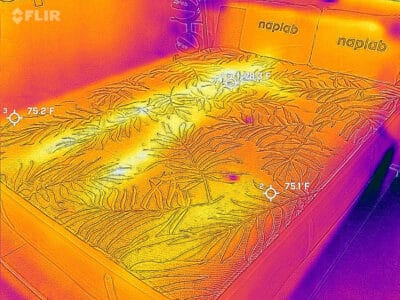
- Baseline Temperature – the temperature of the mattress before anyone lies on it
- Maximum Temperature (0 minute) – the temperature of the mattress after lying on it for 15 minutes
- Ending Temperature (5 minute) – the temperature of the mattress after being lied upon and having no one on it for 5 minutes
I really am quite disappointed with the quality of the foams. They both look and feel lower quality.
Each of the foam layers has a noticeable “crunchy” feel to it when weight or pressure is applied. Needless to say, that’s not ideal. You more typically see foams look and feel like this after years of use. To see a foam feel like this on day 1 is shocking.
While the surface level temperature readings were positive, I believe they look far better than reality due to the wintertime test.
The feel directly on my skin was one of notable and significant warming. All that said, given the price point, it’s hard to complain too much. This Posturepedic Plus has the expected level of cooling performance given its price.
Heat Dissipation Over Time
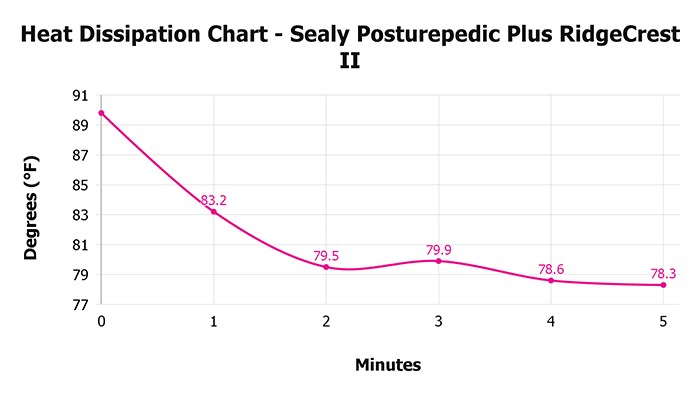
Sinkage Test
The Posturepedic Plus has a moderate level of sinkage. In our pressure point sinkage tests, we measured a sinkage depth of 2.17”.
This is basically at the average level (2.16″), based on all of our sinkage tests to date.
Sinkage Depth
2.17″
Sinkage Feel
Moderate
Body Contour
Balanced
The level of sinkage is documented in the image below.
The mattress has a balanced and restrained level of body contouring hug. This makes sense, given the innerspring coil unit.
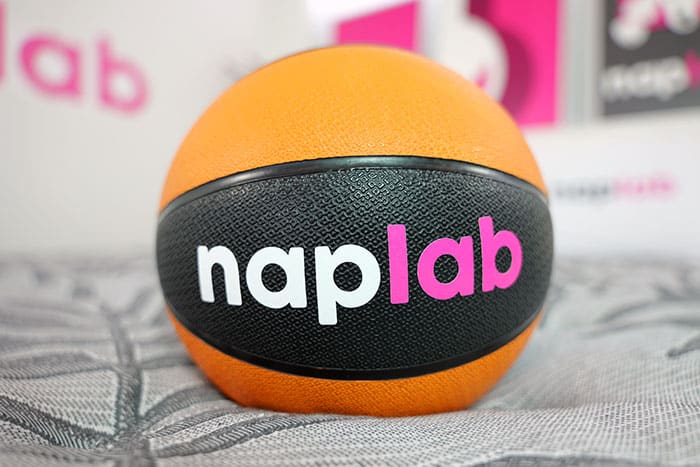
Despite the fact we have 5.0” of foam on top, the foams just don’t overly wrap around the body like memory foam or many other types of poly foam will. This gives the mattress a fairly typical traditional coil type of feel.
This is neither good nor bad, but it is a specific feel. Those who like coil mattresses will likely find the sinkage and comfort dynamic appealing. While those who have mostly slept on hybrid, memory foam, or other foam mattresses may find it doesn’t create enough pressure relief.
Motion Transfer Test
The Sealy Posturepedic has a low level of motion transfer. In our tests, we measured a total acceleration range of 9.53 m/s². This is 12.3% more motion transfer than the average of 8.64 m/s² (based on all of our tests to date).
Accel. Range
9.53 m/s²
Motion Duration
0.62 seconds
The level of motion transfer is also documented in the video below.
In our motion transfer chart, which visualizes our accelerometer data, we see the highest motion peaks from 0 to 0.22 seconds. Motion drops off thereafter and by 0.62 seconds we return to near-zero levels of energy.
Motion Transfer Over Time
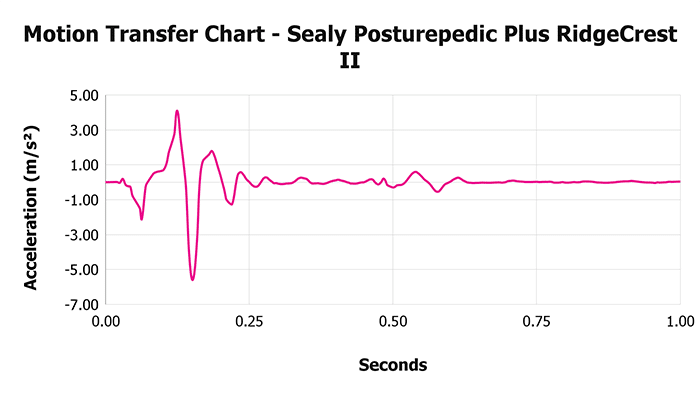
While the motion peaks are a little higher than is ideal, the motion duration is quite a bit shorter than I expected. Typically, innerspring mattresses have higher motion transfer, due to the nature of the springs.
However, here we measured a relatively restrained level of motion spike and a duration that is about 0.4 seconds faster than would be more typical.
Response Test
The Sealy Posturepedic RidgeCrest is a bit of a mixed bag when it comes to material responsiveness. In our tests, we measured a mostly recovered response time of 0.5 seconds and a fully recovered response time of 2.8 seconds.
Mostly Recovered
0.5 sec.
Complete Recovery
2.8 sec.
The mostly recovered response time is just 0.1 seconds slower than average. However, the fully recovered response time is 1.94 seconds slower than average.
The level of responsiveness is documented in the video below.
Most sleepers should find that the 0.5 seconds to mostly recover creates enough material speed to be comfortable. However, a fully recovered time of 2.8 seconds is bad no matter how you slice it.
Out of the 265+ mattresses we’ve tested to date, the Ridge Crest falls in the slowest 10% of mattresses. This type of slow recovery makes it more difficult to move around on the mattress and can create a sensation of feeling “stuck”.
Bounce Test
The Sealy Posturepedic Plus has a high level of bounce. In our tests, we measured a total bounce height of exactly 10.0”. This is just slightly more bounce than the average of 9.69”, based on all of our tests to date.
Max. Depth
4.84″
Max. Rebound
5.16″
Total Bounce
10.00″
Max. Sinkage Depth

Max Bounce Height

The level of bounce is also documented in the video below.
Ideally, I want to see bounce in the 8-12” range. At this level, we can experience the benefits of the bounce, namely sex performance and ease of movement, without it being so high as to create problems like higher motion transfer.
At 10.0” the Posturepedic Plus is exactly in the middle of my ideal range. Most sleepers will find this level of bounce to be perfectly sufficient.
Edge Support Test
The Sealy Posturepedic has outstanding sitting edge support and excellent lying edge support. In our sitting tests, we measured a sitting sinkage compression at the edge of just 3.0”.
Max. Sinkage
3.00″
Lying Support
Excellent
Reinforced Edge
Yes
This is 1.10” less sitting edge sinkage than the average of 4.10”. Notably, we tested the firm version, which is likely to have better sitting sinkage compared to the plush version.
So do bear that in mind if you’re thinking about opting for the plush.
The level of edge support while seated is documented in the images below.
Sitting, 140 lbs.

Sitting, 200 lbs.

Lying edge support was nearly as good. In our lying edge support tests I felt well supported in all sleeping positions.
The level of edge support while lying is documented in the images below.
Lying on Edge, 140 lbs.

Lying on Edge, 200 lbs.

While Sealy is vague on the exact specs of the edge support, they do mention that the mattress is equipped with perimeter edge support coils. Thanks to these coils and the slightly firm feel, the mattress can deliver solid edge support for both sitting and lying.
Sex Test
The Ridge Crest II has good sex performance. In our tests, we measured a high level of bounce paired with excellent edge support. These two factors make up 80% of the sex score and are critical to good performance in this category.
| Sex Factor | Factor Weight | Score | Rating |
|---|---|---|---|
| Bounce | 65% | 8.7 | High |
| Edge Support | 20% | 10 | Outstanding |
| Noise | 5% | 10 | Minimal |
| Pressure Relief | 5% | 6.0 | Mediocre |
| Cooling | 5% | 8.0 | Good |
It does struggle with cooling and pressure relief, but within the sex test, these sub-factors just aren’t worth enough of the total score to really bring down performance.

That said, if cooling and pressure relief are important factors to you, this may be something to consider.
Pressure Relief Test
The Sealy Posturepedic Plus Ridge Crest II has mediocre pressure relief at best. During our tests, I felt a moderate level of pressure point build up in my shoulders and back.
Comfort Layer
5.0″
Support Layer
9.0″
The Posturepedic Plus uses a 5.0” thick comfort layer, which ordinarily would be more than thick enough to create ample pressure relief. However, the foams look and feel low quality.
When I press directly into the foams there is a noticeable “crunchiness” to them. This type of feel can sometimes occur when foams are many years old.
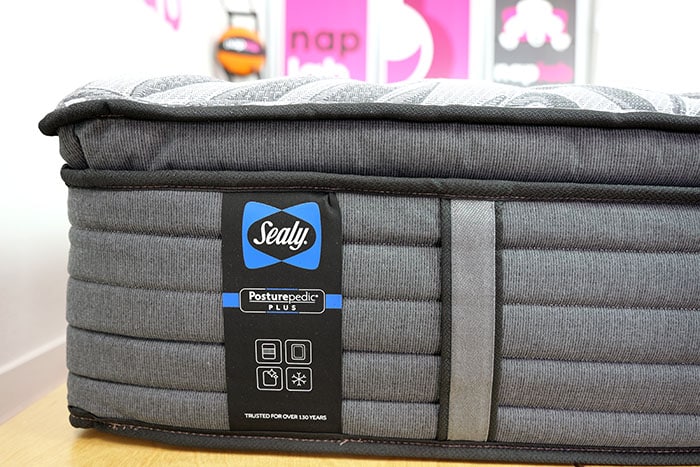
Suffice it to say, seeing foams in this condition on a brand-new mattress is massively concerning. During our testing, any time I lay in the same spot for more than a few minutes I could feel a building level of pressure.
In my view, the foam quality is severely limiting the pressure relief on the mattress.
Off-Gassing Test
Off-gassing on the Sealy Posturepedic is fair. The smell is strong right out of the box and took 10 days to follow dissipate.
Initial Smell Strength
Strong
Off-Gassing Period
10 days
Across all mattresses tested to date, 10 days is certainly longer than average. To date, the average off-gassing period is 7 days.
Company
The company score takes a look at factors that may influence your experience with the mattress.
Factors include length of the trial period, warranty, shipping / return costs, and country of origin.
| Company Factor | Factor Weight | Score | Data |
|---|---|---|---|
| Returns | 40% | 10 | $0 |
| Trial Period | 30% | 10 | 365 nights |
| Warranty | 20% | 8.0 | 10 years |
| Shipping | 10% | 10 | $0 |
| Country of Origin | 0% | USA |
Notably, this score is more reflective of Costco than Sealy, as Costco is the one supplying the trial period, shipping, and returns.
The company has a 100-night trial period and a 10-year warranty. This is shorter than the average trial period length of 165 nights.
For comparison, among all mattresses tested to date 25% of them have lifetime warranties and the average of the other 75% of mattresses is 14 years.
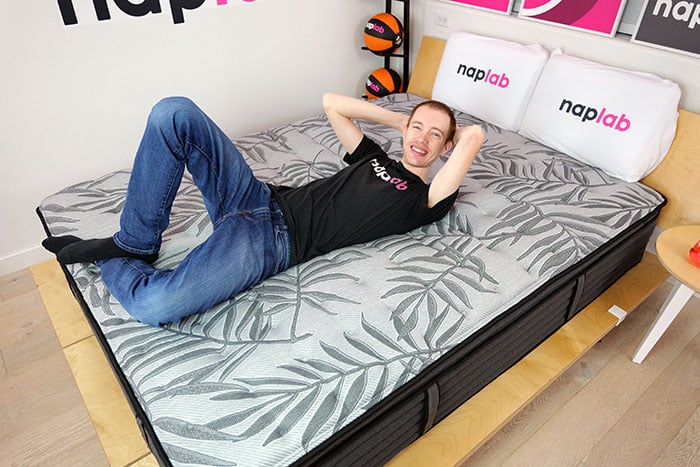
Using this data, the Sealy warranty is shorter than average, but not completely unreasonable.
How firm is Sealy Posturepedic Plus?
The Sealy Posturepedic is available in two firmness levels—plush or firm. In this review, we tested the firm, which has a slightly firm feel and a firmness rating of 7 out of 10.

We estimate the soft version to have a medium feel and a firmness rating of 5 out of 10.

Support & Sleeping Positions
The Sealy Posturepedic Plus has a good level of support. However, that support is complicated by less-than-great pressure relief. In the case of the Posturepedic Plus, the foam quality is creating notable pressure points on the mattress.
| Support Factor | Data |
|---|---|
| Comfort Layer | 5.0″ |
| Support Layer | 9.0″ |
| Firmness | Medium, and Slightly Firm |
| Body Contour | Balanced |
| Zoned Support | Yes |
| Reinforced Edge | Yes |
These were especially apparent in the middle of the mattress, where there is more supportive material (what Sealy calls their “Targeted Support”). While I do feel that the mattress creates plenty of support with its 1,072 coils, the support just isn’t comfortable due to the lack of pressure relief.
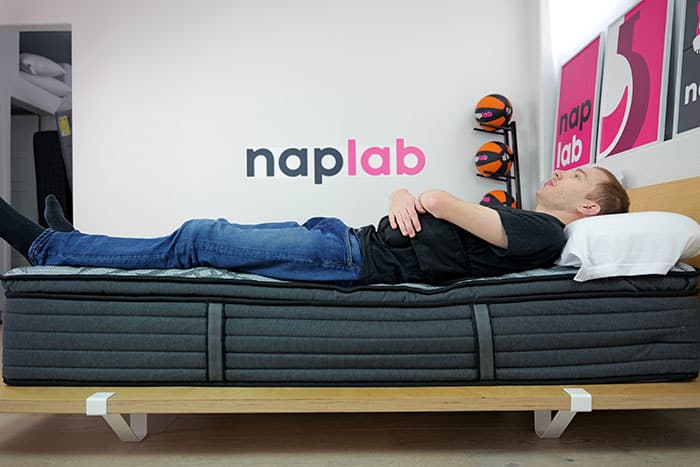
As a result, I found it hard to find a comfortable position on the mattress during our tests. It’s possible my relatively lightweight body of 140 pounds just isn’t well suited to the support dynamic of the mattress and that heavier-weighted bodies may find it a more even feel.
Even so, much like with pressure relief, I found the support performance to be far from great.
The chart below shows our recommendations for the body types and sleeping positions best suited for the Firm version of the mattress.
| Sleeper Weight | Stomach Sleepers | Side Sleepers | Back Sleepers |
|---|---|---|---|
| Under 150 lbs. | Maybe | No | Maybe |
| 150-250 lbs. | Yes | Maybe | Yes |
| 250-300 lbs. | Yes | Yes | Yes |
Normally, we would also include our estimates of the Plush version here as well. However, I am more reluctant to do so, as the firm version of the mattress has a more complex support dynamic.
My fear is that the plush likely has its own set of unique issues and I don’t feel confident that my support estimates would be accurate. That said, given the support performance we experienced with the firm version I would be shocked if the plush version creates good support.
Design
The Sealy Posutrepedic Plus mattress is a 14″ coil mattress that comes in two different firmness levels—Plush and Firm.
| Design Factor | Data |
|---|---|
| Type | Coil |
| Thickness | 14.00″ |
| Cover Type | Pillow Top |
| Weight | 74 lbs. |
| Has Handles | No |
| Fiberglass-Free | Yes |
| Ships in a Box | No |
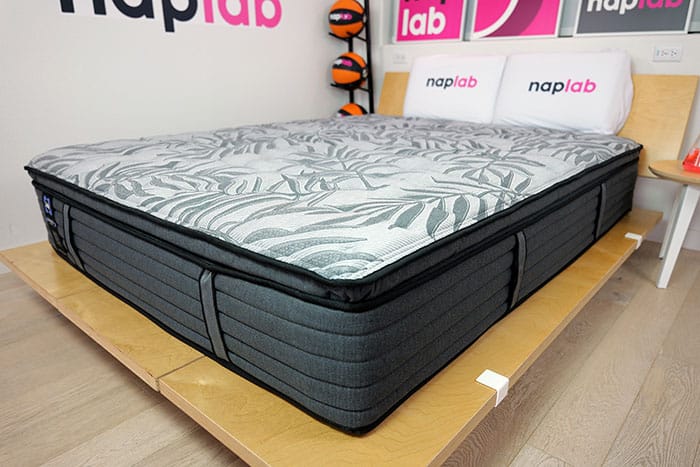
Materials
The Sealy Posturepedic Plus Ridge Crest is made up of six layers, in total. From top to bottom, these layers include:
| Layer Type | Thickness | Layer Specs |
|---|---|---|
| Pillow Top | 2.0″ | Not Available |
| Poly Foam | 1.0″ | Not Available |
| Poly Foam | 1.0″ | Not Available |
| Poly Foam | 1.0″ | Not Available |
| Coil Unit | 8.0″ | Not Available |
| Support Foam | 1.0″ | Not Available |

The Law Tag outlines the full breakdown of materials included in this mattress.
- 85% polyurethane foam pad
- 99% polyurethane
- 1% liquid gel
- 15% blended fiber batting
- 80% rayon
- 20% polyester
- Innerspring unit
The Cover
The cover of the Sealy Posturepedic Plus is a 2.0″ quilted cover with a plush feel. It has black binding at the edges with a narrow gusset, giving it a pillowtop look.

The sides of the mattress are made of a dark gray fabric, which is more durable than the top. This helps strengthen the sides and also makes it easier to move the mattress as needed.
The Comfort Layer
The comfort layer of the Sealy Posturepedic Plus includes three layers of poly foam beneath the quilted cover.
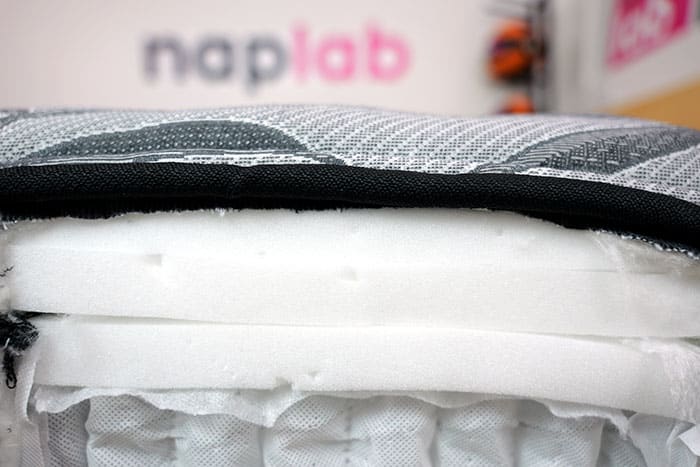
The lower layers operate more as transitional foam to ease the pressure between the top layers of the mattress and the support coil base.
The Support Layer
The support layer on the Sealy Posturepedic Ridge Crest mattress is an 8.0″ innerspring unit followed by a 1.0″ high-density support foam to help the mattress maintain its structure.

Product Evolution
The Sealy Posturepedic Plus RidgeCrest II is an evolutionary step (though de-evolution might be more accurate) from the original Sealy Posturepedic Plus hybrid sold directly from Sealy. The RidgeCrest II is available exclusively from Costco and is essentially a worse version of the Posturepedic Plus at a lower price point.
For sleepers who want Sealy at a lower price and don’t need the higher-end performance materials and design, this could be a good option.
For reference, the Original Sealy Posturepedic Plus mattress was first released by Sealy in 2019 as a luxury hybrid. There have been no major changes to the mattress since its initial launch.
Other Mattresses to Consider
Not sure if the Sealy Posturepedic Plus is the right pick for you? Check out these three other mattresses for high-performing alternatives you may want to consider.
For Luxury
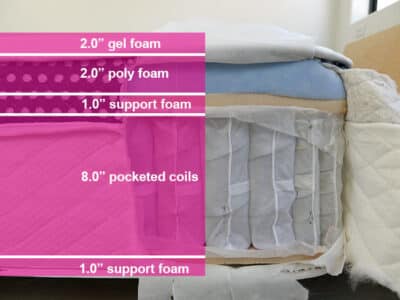
Winkbed Original
Top-Rated Hybrid
The Winkbed Original is a 13″ hybrid mattress that uses a foam comfort layer and a coil base—although this base is made of 8.0″ pocketed coils instead of an innerspring unit. The price for Winkbed is certainly higher, but it offers exceptional performance, including huge improvements concerning motion transfer and pressure relief.
For Value
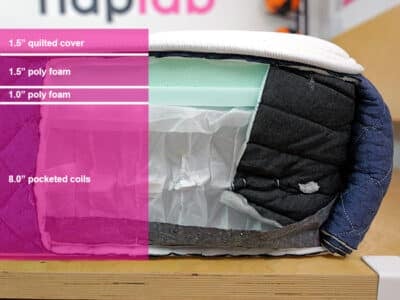
Brooklyn Bedding Signature Hybrid
Three Firmness Options
The Signature Hybrid by Brooklyn Bedding is a 12″ hybrid mattress with poly foam and coil support. Like the Winkbed, the Signature Hybrid uses pocketed coils and skips the innerspring unit (which the Sealy uses). Performance-wise, Brooklyn Bedding ties or outperforms the Sealy in 6 out of the 8 testing categories. The biggest improvement is better pressure relief.
For Budget
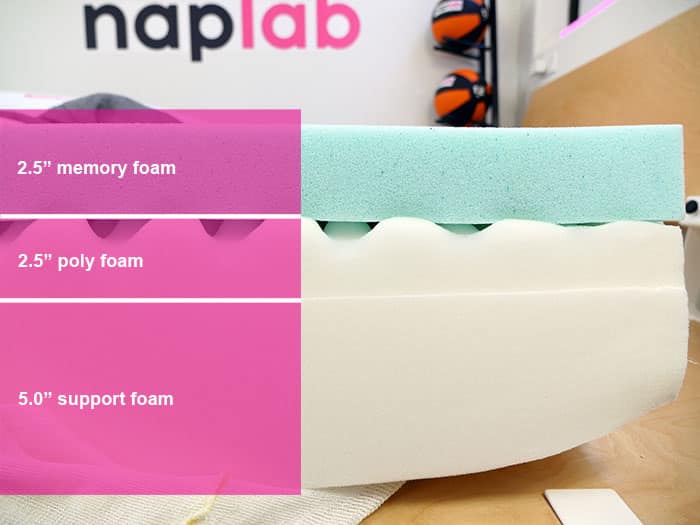
Siena
Foam Mattress Under $400
The Siena does not have any coils (pocketed coils or innerspring), but is still a solid performer and may be a good pick to consider. This mattress has a 5″ comfort layer and 5″ support foam below and offers very balanced performance, especially given the price point.
Frequently Asked Questions
Still have questions? Check out some of the top FAQs on the Sealy Posturepedic Plus mattress below and get the answers you’re looking for.
Here are the current prices, with any sales or promotions reflected below:
Full: $779
Queen: $849
King: $1,079
Cal. King: $1,079
*Note: Sales prices are subject to change without notice or warning.



